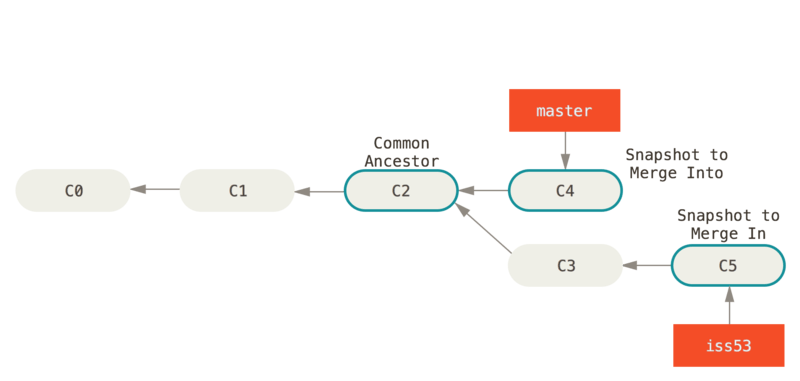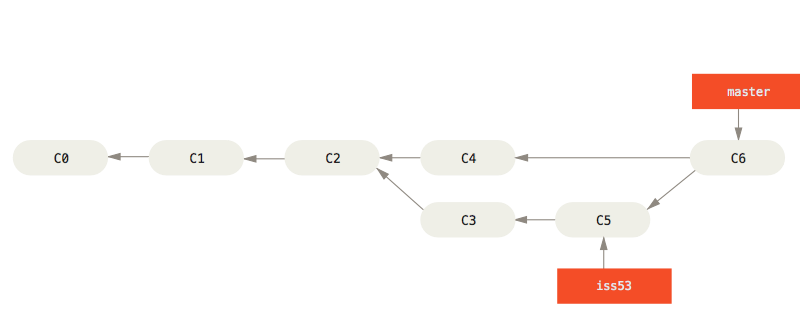Merging
Like road merging but for branches
In the last section, we learned about creating new branches. Often branches are created temporarily to work on a specific piece of work. When that work is ready, then those changes are brought back into the main line again.
Remember the branches from the last section? Originally there was the master branch, and then we created a branch called 'favourite-animal', where we made changes. We can now merge those changes back into master branch, and delete the 'my-new-branch' since we won't need it anymore.
Practical One - Fast-forward merging
The simplest form of merging is fast-forward merging. Since branches are just references to commits, and 'favourite-animal' is a direct descendant of master; we can just update master to point to the same commit as 'favourite-animal'.
This is the default way that git will merge when the target branch is an
ancestor of the source branch. First, checkout the target branch (master in
this case), and then use the merge subcommand to bring the changes from the
source branch (favourite-animal) into this branch:
git checkout master
git merge favourite-animalMaster and the 'favourite-animal' branch are now pointing at the same commit. We can delete the 'favourite-animal' branch.
git branch -d favourite-animalPractial Two - Merge commits
In some cases, the target branch will not be a direct ancestor of the source branch. This is the case for our 'favourite-show' branch. Here, the default action is to create a new commit which has two (or more) parent commits and a message.

While on the master branch, we can now merge the changes from the 'favourite-show' branch as follows:
git merge favourite-showThe default commit message editor will have appeared here, to give you the opportunity to modify the commit message for the new commit. The default is usually fine.

Usually a merge commit will not contain any changes to files itself. The changes will be in its ancestors. Sometimes when merging two divergent branches though, there will be conflicting changes on either side of the merge. In this case, there may be changes needed in the merge commit to resolve the conflicts.
It is worth checking the log here to see the commit history.
git log